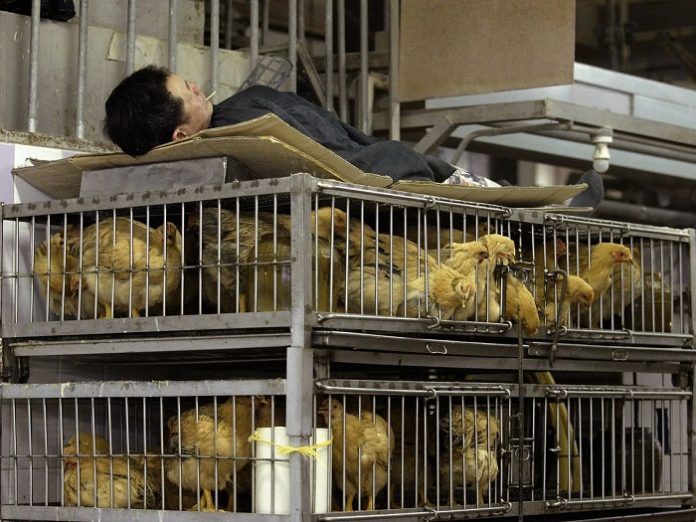The coronavirus, a pneumonia-causing illness that infects the respiratory tract and appears to have originated in the Central Chinese city of Wuhan, is now responsible for 213 deaths in China and 9,692 cases worldwide, according to the latest data from the National Health Commission of China.
The new virus is thought to have stemmed from wildlife and it highlights our risk from the animal-borne disease. This is likely to be more of a problem in future as climate change and globalization alter the way animals and humans interact
Are animals making people sick?
Evidence from last 50 years suggests that, a host of infectious diseases has spread rapidly after making the evolutionary jump from animals to humans.
In 1980s the HIV/Aids crisis originated from great apes, followed by avian flu pandemic (bird flu) in 2004-07 came from birds, and pigs gave us the swine flu pandemic in 2009. Recently, it was discovered severe acute respiratory syndrome (Sars) came from bats, via civets, while bats also gave us Ebola.
Humans have always caught diseases from animals. In fact, most new infectious diseases come from wildlife. And environmental change is speeding up this process, while increased city living and international travel mean when these diseases emerge, they can spread more quickly.
Why are diseases jumping species?
Most animals carry a range of pathogens – bacteria and viruses that can cause disease. The pathogen’s evolutionary survival depends on infecting new hosts – and jumping to other species is one way to do this.
Both are locked in a perpetual evolutionary game trying to find new ways to conquer each other. As the new host’s immune systems try to kill off the pathogens
For example, during the 2003 Sars epidemic, about 10% of infected people died compared with under 0.1% for a “typical” flu epidemic.
Evolving environment and climate changes are removing and altering animals’ habitat, altering their habitat, and food habits.
The humans’ lifestyle has also changed – 55% of the global population now lives in urban areas, up from 35% 50 years ago.
And these bigger cities provide new homes for wildlife – rats, mice, raccoons, squirrels, foxes, birds, jackals, monkeys – which can live in the green spaces such as parks and gardens, off the waste humans leave behind.
Often, wildlife species are more successful in cities than in the wild because of the plentiful food supply, making urban spaces a melting pot for evolving diseases.
Who is at risk?
New diseases, in a new host, are often more dangerous, which is why any emerging disease is concerning. Some groups are more vulnerable to catching these diseases than others.
City-dwellers with limited means are more likely to work in cleaning and sanitation, boosting their chances of encountering sources and carriers of disease.
They may also have weaker immune systems because of poor nutrition and exposure to poor air or unsanitary conditions. Moreover, for them, medical care is also difficult to afford.
New infections can also spread rapidly in big cities as people are packed so tightly – breathing the same air and touching the same surfaces.
In some cultures, people also use urban wildlife for food – eating animals caught within the city or bush meat harvested from the surrounding area.
How can we protect ourselves?
Rather than recognizing each infectious disease as a byproduct of changing worlds. Societies and governments tend to treat them as a new independent crisis.
Environmental changes provide the opportunity to disrupt ecosystems and this can result in the emergence of new diseases.
Only about 10% of the world’s pathogens have been documented, so more resources are needed to identify the rest – and which animals are carrying them.
For example, how many rats are there in London and what diseases do they carry?
Many city-dwellers value urban wildlife but we should also recognize some animals carry potential harms.
It makes sense to keep track of which animals are newly arriving in cities and whether people are killing or eating wildlife or bringing them to markets from the surrounding area. Improving sanitation, waste disposal and pest control are ways to help stop these outbreaks emerging and spreading. More widely, it is about changing the way our environments are managed and the way people interact with them.
Pandemic is inevitable
Acknowledging new diseases are emerging and spreading in this way puts us in a stronger position to fight new pandemics, which is a part of our future.
A century ago, the Spanish flu pandemic infected about half a billion people and killed 50-100 million people worldwide.
Scientific advancement and huge investments in global health mean such a disease would be better managed in the future.
However, the risk remains real and potentially catastrophic – if something similar were to happen again, it would reshape the world.
By the middle of the last century, some in the West claimed infectious diseases were conquerable.
But as urbanization and inequality grow and climate change further disturbs our ecosystems, we must recognize emerging diseases as a growing risk.
Source-BBC

















